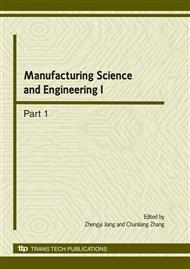p.620
p.625
p.629
p.634
p.638
p.642
p.648
p.652
p.656
A Numerical Method for Predicting the Young’s Modulus of Ceramic
Abstract:
This paper presents a numerical method that can predict the Young’s modulus of ceramic with reasonable accuracy. By introducing periodic conditions, the distribution of pores in the matrix phase is simulated. The lattice model is then employed for the analysis of stress in the pore structure and for the determination of the maximum element length. Finally, the validity of the proposed numerical method is preliminarily verified with the experimental results obtained from the literature.
Info:
Periodical:
Pages:
638-641
Citation:
Online since:
March 2010
Authors:
Keywords:
Price:
Сopyright:
© 2010 Trans Tech Publications Ltd. All Rights Reserved
Share:
Citation:


